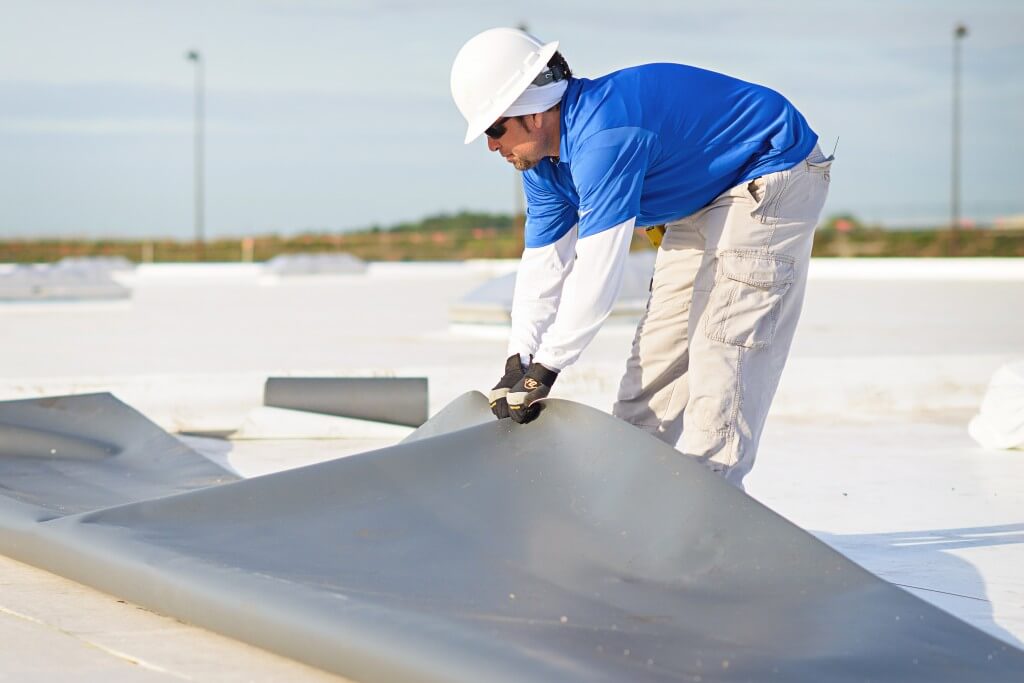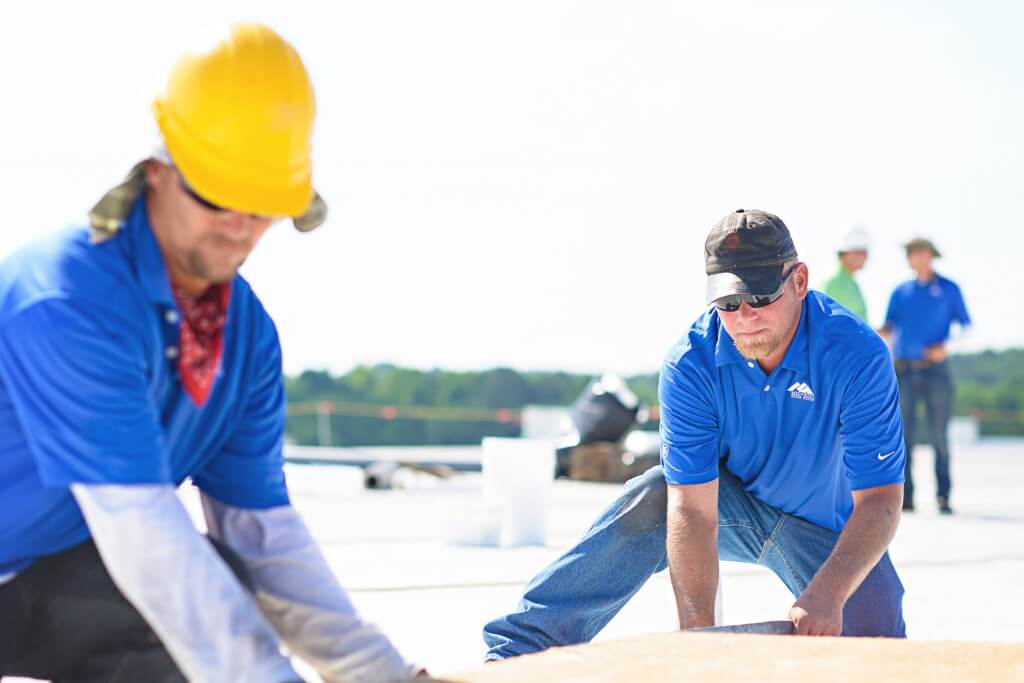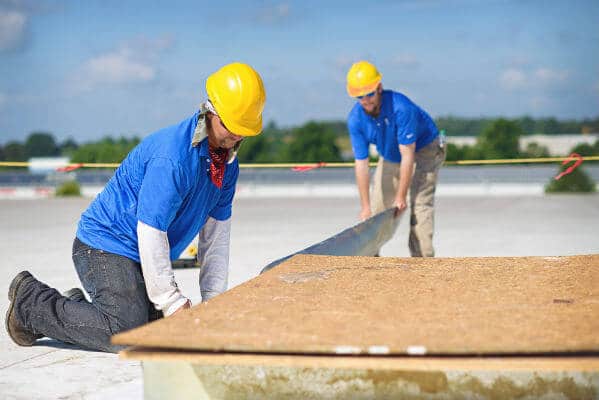3 Roof Material Options for Replacing Your Roof


So it’s time to replace your roof. But do you even know what kind of roof you have or what kind of roof you want?
There are generally three possible options for your existing flat roof: single-ply, a coating, or built-up. Each is chosen for specific reasons and provide optimal results in different situations. Get to know their advantages and disadvantages and keep in mind that you can always cover over an existing roof with a new roof — but only once. Building codes limit commercial structures to two roofs in place, so your future plans must be part of your decision.
Single-Ply: The Common Solution for the Common Building
Single-ply roofs dominate the current re-roofing market. They can be installed fairly quickly and fall in the middle of the price spectrum. They come with comprehensive warranties that cover both labor and materials that typically last up to 20 years.
Single-ply roofs are low maintenance and remarkably sturdy – but by no means does that mean they can be ignored. They resist ponding water better than any other roof and the synthetic materials from which they’re made are often used as pond liners in water features. And if for any reason they need to be replaced or repaired, they can easily be torn off.
Most building owners go with single-ply roofs for good reason. They’re durable for decades, they don’t require a lot of maintenance (but still need some), and they fall into the relatively affordable price range.
Built-Up: Strong, Durable Roofs of Yesteryear
Old-school, traditional construction at its purest, built-up roofs are made by building up layers of felt, tar, gravel, and asphalt — hence the name.
Ultra tough and rugged, built-up roofs are still found on many older buildings that were constructed before single-ply roofs hit the market, like older factories or apartment buildings. Although repairing or patching an existing built-up roof is nothing unusual, it’s fairly uncommon for a building owner to order a new one today. The overwhelming majority of built-up roofs installed today are ordered for government buildings such as school, because government entities often have the budget to pay for strength and durability that they may never actually need.
Built-up roofs are strong, but they come with drawbacks. They are the most expensive option and building them is a labor-intensive process, and their warranties aren’t any more comprehensive than that of a singly-ply roof (approx. 20 years). They also require constant maintenance, and the organic flat roof materials of which they’re built can become saturated and extremely heavy, so they don’t do well with ponding water and may eventually need to be torn out and replaced. Tearing off a built-up roof can take twice as long as it would for a single-ply roof with all of that heavy material on top.
Built-up roofs are a smart choice when there’ll be plenty of work done on top of the roof that requires extra protection. If you don’t expect any heavy traffic on your roof, you could end up paying for strength that will never be fully utilized.
Coatings
Coatings are the least expensive and least durable option. They can be installed very quickly. Their warranties are fundamentally different than the other options and function more like shingle warranties on residential roofs. That means they often don’t cover labor or replacement costs, and their coverage value may diminish with time.
Most often, coatings are a short-term solution or a stop-gap measure for an existing roof that is in trouble. They make sense for building owners who need their roof to make it through a few years while they set aside the room in their capital budgets to invest in a replacement roof like the single-ply or built-up. For owners who are concerned about immediate leaks, they can put on a coating to extend the life of their existing roof and then install a more permanent solution further down the line.
Single-ply, built-up, and coatings serve different functions and come at different prices. How long do you need your roof to last? How many layers does it already contain? What is the material found in those layers? When you ask the right questions about your roof, the answers about what to do next become clear.
LIKE WHAT YOU JUST READ?
Sign up for our newsletter to get fresh articles, updates and more!
Assess, Report and Decide: Get to Know Your New Building’s Roof
If you’re considering buying a new building, the very first item on your list should be to get an assessment of the roof’s condition. This analysis can prevent surprises down the line and—if the roof needs work—it can have a dramatic effect on the price you wind up paying for the building.
Why You Need A Roofer Onsite When You Install Your HVAC System
It’s common to place the heating, ventilating and air conditioning (HVAC) systems for large buildings on the roof. A successful rooftop HVAC installation usually involves the collaboration of an entire team of workers, so that issues related to the roof, structures, electrical and HVAC can be discussed beforehand. If an HVAC system is not coordinated…


